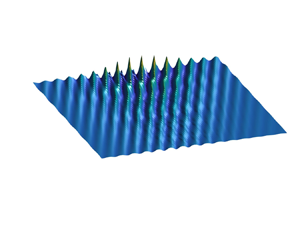Article contents
Evolution of water wave groups with wind action
Published online by Cambridge University Press: 25 August 2022
Abstract

A modified fully nonlinear model of an air–water system in deep water is presented in which the effect of wind in the air is simply represented by a direct link between the air–water interface pressure and the interface slope. The water system is a fully nonlinear Euler model of incompressible and irrotational fluid flow. Our main aim is to establish and compare with a reduced model represented by a forced nonlinear Schrödinger (FNLS) equation that describes wave groups in a weakly nonlinear asymptotic limit. Wave groups are described by the soliton and breather solutions generated by four cases of initial conditions in the relevant parameter regime. Numerical simulations of wave group formation in both models are compared, both with and without wind forcing. The FNLS model gives a good prediction to the modified fully nonlinear model when the wavenumber and wave frequency of the initial carrier waves are close to unity in dimensionless units based on typical carrier wavenumber and wave frequency. Wind forcing induces an exponential growth rate in the maximum amplitude wave. When the wave steepness becomes high in the fully nonlinear model some wave breaking is observed, but the FNLS model continues to predict large waves without breaking and there is then agreement only in the initial stage for the relevant initial conditions and parameter value ranges.
JFM classification
- Type
- JFM Papers
- Information
- Copyright
- © The Author(s), 2022. Published by Cambridge University Press
References
- 8
- Cited by



